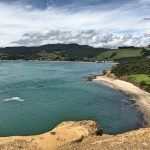Auckland has some pretty special beaches, and many of them can get super crowded in the hot summer months.
But there’s a hidden gem that not many people know about that’s well worth a visit due to its off-the-beaten-track hidden location and historical significance.
Karaka Bay (or Waiarohe in Māori which translates as ‘bay of shimmering waters’ ) is a small bay that’s located in the eastern Auckland suburb of Glendowie.
The reason why it’s such a gem and hidden away is that there’s no vehicle access.
To get down to the bay you need to park your car at the end of Peacock Street, then take a steep, winding path through the bush down to the water’s edge.
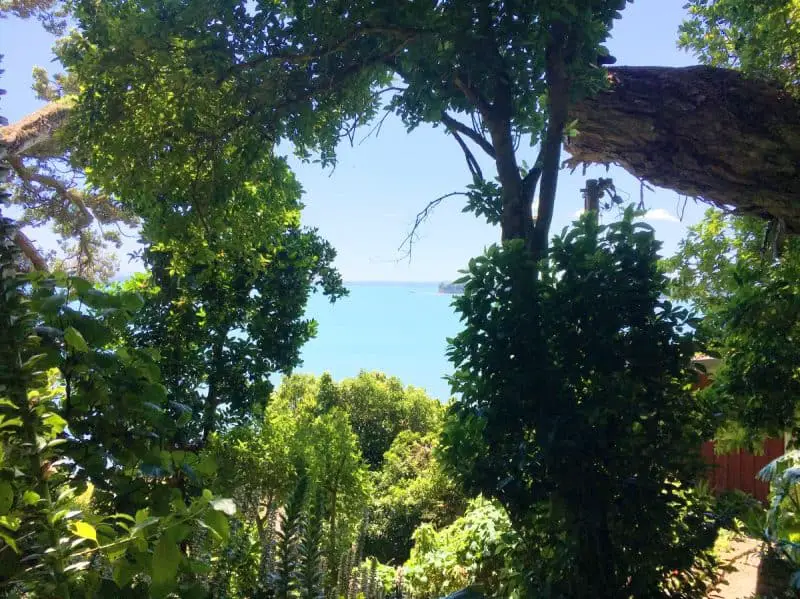
A sneak peek of the sea greets you as you wander through the forest down to Karaka Bay
It’s so worth it. You’re immediately greeted by a horseshoe-shaped cute little bay with white sand that gives breathtaking views out to Rangitoto Island and Motukorea (Browns Island).
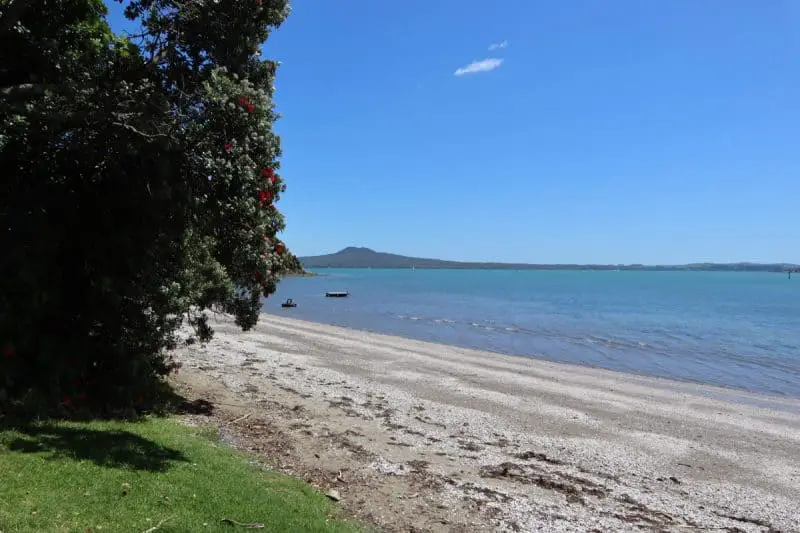
The stunning view that greets you when you arrive at Karaka Bay. Where are all the people?!
Beautiful pohutukawa trees – known as New Zealand’s Christmas tree – fringe the bay and provide a great place for kids to let off some steam by climbing branches and swinging off the ropes that kindly locals have put up.
Visiting Karaka Bay is like going back in time to the 1950’s. There are a handful of houses or baches as they’re described in Kiwi slang, many of them in original condition.
It would be super difficult to transport in building materials and there’s no way a concrete truck is getting anywhere near the site, so there aren’t any steel and glass mega-mansions like on top of the hill above on Riddell Road where many of Auckland’s rich-listers live.
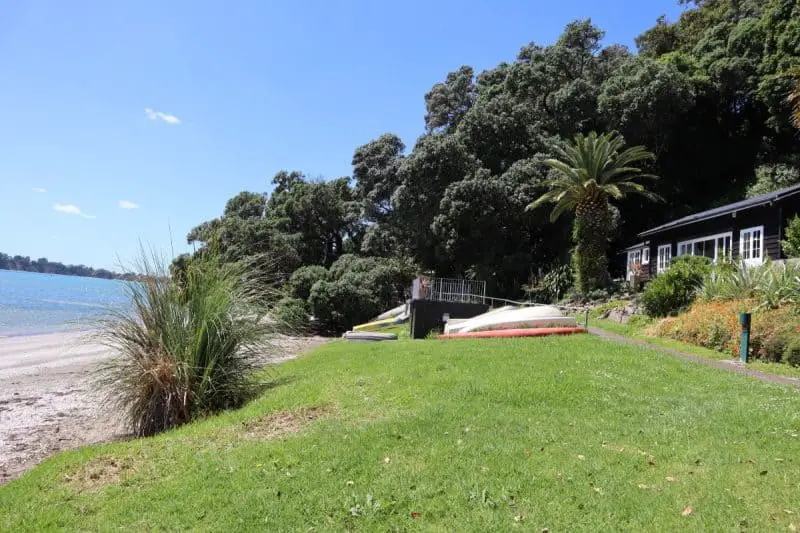
One of the character bach-style houses at Karaka Bay
These houses with their rustic construction, home-made vegetable gardens and communal picnic tables on the grass verge give the bay so much charm, and if you didn’t know better you could imagine that you are in one of New Zealand’s beachside towns in the Coromandel Peninsula rather than an urban suburb of Auckland.
You get the feeling it’s a neighbourhood where everyone knows everyone else, and they don’t need to worry about securing their possessions. They’re hardy souls, given that the only access to and from their properties is down the steep track through the forest come rain or shine.
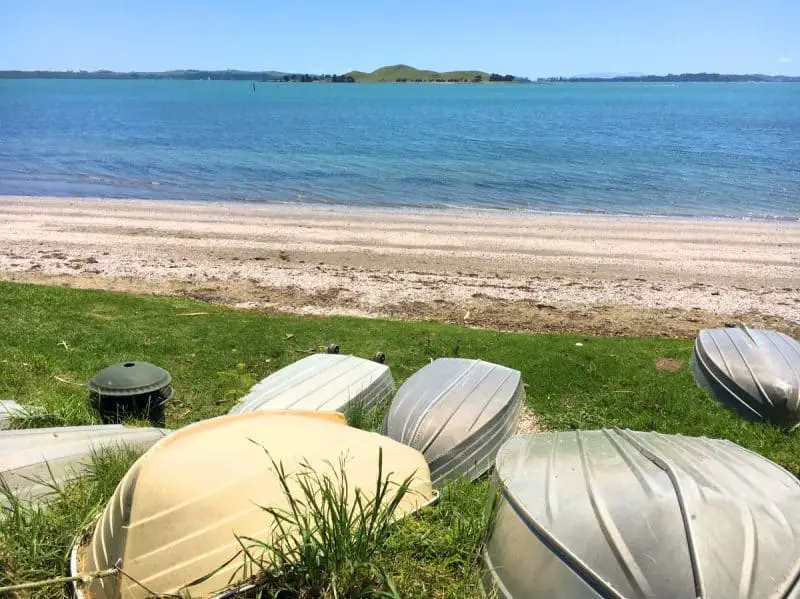
No worries mate, just pull your dinghy up the beach and leave it, she’ll be right!
Local owners simply pull their dinghies (row boats) up to the grass verge and leave them there.
The Treaty of Waitangi and Karaka Bay
Karaka Bay marks the entrance point where the Tāmaki River meets the Hauraki Gulf and it also has important cultural significance.
Back in 1840 when the Treaty of Waitangi (the document signed between New Zealand Māori and representatives of the English crown) was signed, the document travelled up and down New Zealand where various iwi (tribes) signed it throughout the year.
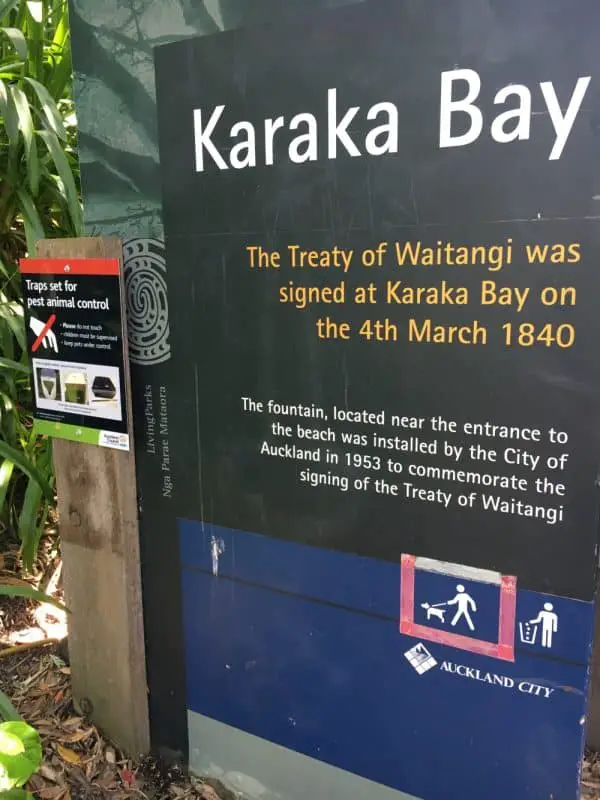
Karaka Bay was the site of the Auckland signing of the treaty by 17 local chiefs over a period of months, and a commemorative fountain has been erected by the local board to commemorate this important historical occasion.
Characters of Karaka Bay
Karaka Bay has been home to some eccentric people – and animals!
Recently some young children digging at the beach and exploring with a metal detector came across the remains of a houseboat that a family used to inhabit in the 1920’s. The boat apparently ran ashore during a storm but the family continued living in it basically until it fell apart!
Over the years authors and artists have recognised the creative nature of the place and made it their home.
Perhaps one of the most notorious residents was a large white pig named Piglet (highly original) who used to wander along the foreshore and sometimes join local children for a swim. Not everyone was a fan however and there was a movement to try and remove Piglet from Karaka Bay.
It was a big story in local news (which says a lot about the calibre of news in New Zealand!) and even international journalists from the BBC and Reuters came to cover the story about the swimming pig.
Piglet became even more world famous when her owner, the author Tony Watkins wrote a children’s book about her escapades called ‘Piglet the Great of Karaka Bay’.
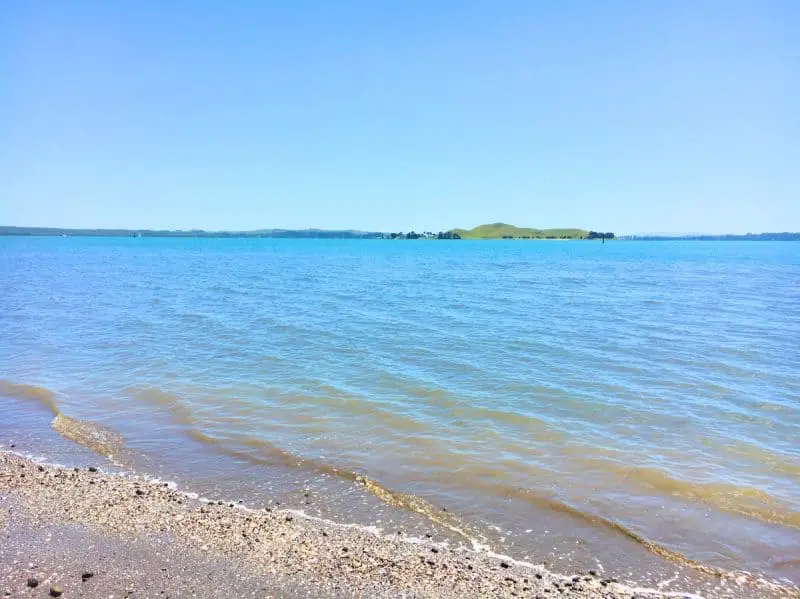
Views out to Motukorea (Browns Island) from the beach
Wandering along the Karaka Bay foreshore admiring the stunning harbour views is fun, but if you want a more challenging walk you can do a loop at low tide. Continue on around the rocky headland past Ladies Bay (caution as this is a well-known Auckland nudist beach) through to St Heliers.
Maybe grab an ice-cream from the nearby dairy and walk up the hill to Riddell Road and back to Peacock Street.
Another alternative mode of visiting Karaka Bay would be to kayak around the headland from St Heliers. Definitely check the tides for this one and you would need a relatively calm, flat day weather wise.
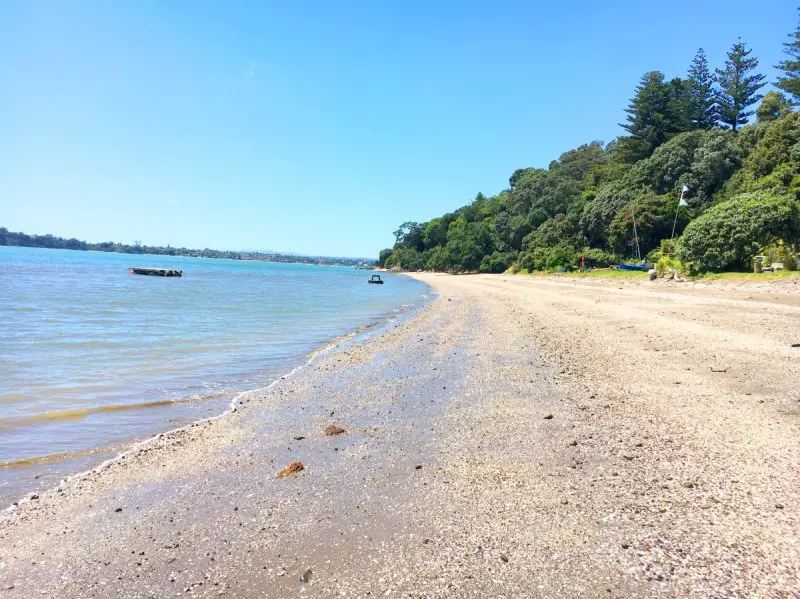
There’s even a pontoon for swimming at high tide
Karaka Bay is such a fantastic place to come and spend the day. The swimming at high tide is great and there is plenty of space to spread out either on the sand or on the grass verges which are accessible to everyone.
Grab some picnic supplies from nearby St Heliers or fish and chips from Riddell Road Takeaways, bring a rug and get set for a perfect day in the sun.


